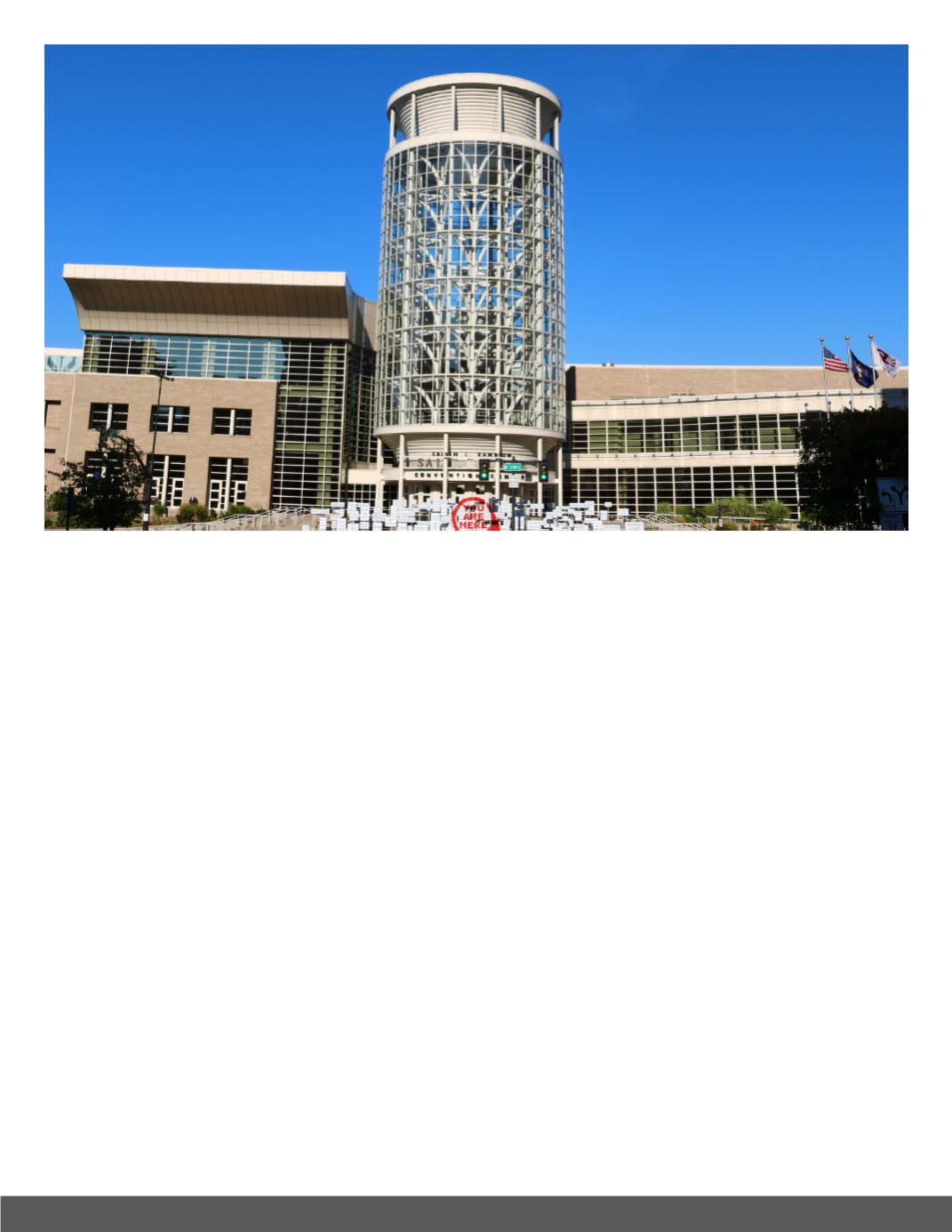
164 Business View Magazine - October 2016
17 percent, as they degrade over time.” We have just
recently initiated our Solar Renewable Energy Credit
program whereby we can either gift or sell energy cred-
its to events so that they can claim their event days are
powered by 100% renewable energy. This is a great
option for meeting planners who are looking to make
their meetings more “green.”
While the Center’s solar array certainly helps reduce
energy costs, Hayes says that employing the kind of
green practices that help sustain the environment,
such as making electricity from the sun as opposed to
fossil fuels, is an important part of the Utahn character
and is well-expressed by the Center’s many sustain-
ability programs and practices. “Salt Lake is fortunate
to be in a remarkable, natural environment,” he states.
“And the vast majority of people who live here appreci-
ate that natural environment; they’re often engaged in
it, directly, in their pastimes, and it’s certainly part of
who we are at our core. Our sustainability efforts are
part of the ethos - the fabric - of our community.”
Thus, Hayes says that the Center is very aggressive in
its drive to reduce, reuse, and recycle. “Cardboard is
targeted with great effort and cardboard is the mate-
rial of choice with respect to exhibitors packing their
gear,” he says. “So, there’s a great deal of cardboard
in our venue. Beyond that, we also have separate re-
cycling containers throughout the venue that capture
mixed recyclables – plastic, aluminum, and paper
board - that are all separated out and recycled sepa-
rately. Last year, we were at about 140,000 pounds of
recycled material.”
What the Center doesn’t recycle, it tries to give away.
“We capture a great deal of product off of our show
floor, whether they be leftover bags, foam core, any-
thing and everything that an exhibitor might not want
and that is not traditional trash, and we get that out
into our community and re-use it,” he explains. “We
formed relationships with a number of community
groups, including educational foundations, non-prof-
its and church-sponsored charities. For examples,


